The Body in Pieces
Grey Walter: “If you have a scanning device, a rotating photo-cell, then once it gets on to a line it will tend to pick up that line again within a reasonable time. […] This is characteristic of quite a simple system without storage.”[1]
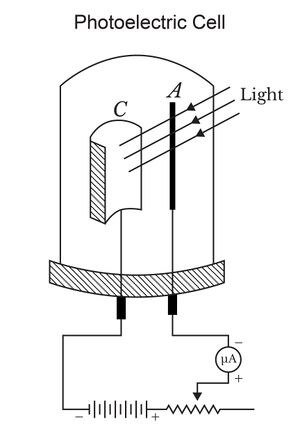
M. SPECULARIX (The Cybernetic Tortoise)
To briefly recap: Discussion on psychoanalysis within the discourse of cybernetics centred around the issue of Freud’s dynamic psychology, which mistakenly accorded quantitively measurable properties where they could not be applied. Lawrence S. Kubie had argued, that to think of the psyche in terms of suppression, displacement and redirection of energy, could never be anything other than an ill-fitting metaphor, which in the era of cybernetics became increasingly redundant. Warren McCulloch, Gregory Bateson and Lawrence Kubie were amongst those who gave Freud’s dynamic psychology serious critique in the light of recent developments in cybernetics – in which negative feedback becomes the central agent of adaptation and change.
These arguments were quick to migrate across the channel and to enter the discourse of psychoanalysis in Paris– becoming particularly important to Jacques Lacan’s Seminar II (1954-55) which I will discuss in some detail in later chapters.
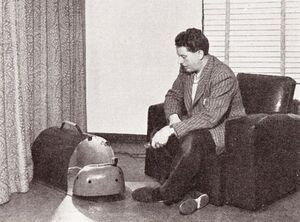
In the late 1940s and throughout the first half of the 1950s the reception in France of cybernetic ideas continued apace: It could even be argued that Cybernetics has its origins in Paris. It was on a trip to the Sorbonne in 1947 that Norbert Wiener was persuaded by his publisher, Enriques Freymann, to bring his innovative thoughts together in a publication. The result, Cybernetics (1948) was published simultaneously in France and The United States.[2]
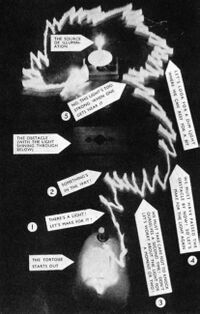
In 1950 Benoit Mandelbrot invited Norbert Wiener to lecture at the Collège de France. Wiener, a fluent French speaker, gave lectures on the radio and met with many of Paris' leading intellectuals. Jean Hyppolite discussed cybernetics and communication theory with Wiener during his visit, a meeting that greatly influenced Hyppolite’s Le Coup de dés de Stéphane Mallarmé et le message (1958). Hyppolite also participated in Lacan’s Seminar II (1954-55) which centred on the issue of Freud’s dynamic psychology in relation to cybernetics (relitigating the issues that had been raised by cyberneticians including Bateson, Kubie and McCulloch). In 1953 Pierre de Latil’s La pensée artificielle appeared, followed in 1954 by Raymond Ruyer’s La cybernétique et l’origine de l’information.
Two cybernetic congresses took place in Paris in 1950 and 1951, bringing French thinkers with a leaning toward the new scientific complex of cybernetics and communication theory together with leading American cyberneticians. The cybernetic congresses were co-organized by Jacques Riguet and Georges Theodule Guilbaud. Guilbaud, the author of the first popular introduction of cybernetics in French, What is Cybernetics (1954), was a close interlocutor and colleague of Jacques Lacan, and attended Seminar II. Considered a major contributor to game theory, an aspect of the cybernetic complex central to Lacan’s Seminar II, Guilbaud’s own seminar on game theory in 1950 analysed Neumann & Morgenstern’s Theory of Games and Economic Behaviour in detail, as would Lacan’s Seminar II.[3]
The 1951 Paris cybernetic congress included the participation of two of the pioneers of cybernetics who were also at the forefront of physiological psychological research in the UK: W. Ross Ashby and Grey Walter (the Americans Norbert Wiener and Warren McCulloch were also in attendance). Whilst in Paris Grey Walter demonstrated his "cybernetic tortoise" – a machine that responded to input from its environment and adapted its behaviour in response to exterior stimulus. Grey Walter’s tortoise was one of the exemplary machines of the cybernetic era. By the time of the 1951 Paris congress on cybernetics the tortoise had achieved some fame, participating in numerous demonstrations, it had been featured on the Pathe News reels (1948) and was a star at the Festival of Britain (1951) and had been a principle topic of conversation during the Macy Cybernetics Conferences (1946-1953). The tortoises’ creator Grey Walter, along with his fellow cybernetician Ross Ashby, had established a reputation as one of the world’s leading brain scientists. Walter worked on the development of EEG (electroencephalography) at the Burden Neurological Institute in Bristol, UK. The tortoises he build combined the ideas of scanning and goal-seeking behaviour which had been central to war-time research along with his central concerns as a neurophysiologist and brain research (as his colleague Kenneth Craik had suggested).
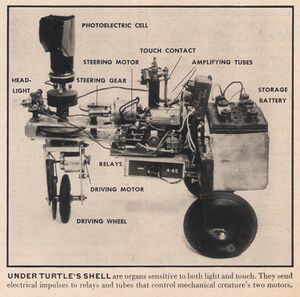
In The Living Brain Grey Walter writes:
“The first notion of constructing a free goal-seeking mechanism goes back to a wartime talk with the psychologist, Kenneth Craik[…] Goal-seeking missiles were literally much in the air in those days; so, in our minds, were scanning mechanisms. Long before (my) home study was turned into a workshop [for the production of cybernetic tortoises], the two ideas, goal-seeking and scanning, had combined as the essential mechanical conception of a working model that would behave like a very simple animal.”[4]
The first two tortoises were called Elsie and Elmer. Grey Walter, who was fond of giving mock-scientific names to cybernetic machines, called this new cybernetic species M. Specularix. In addition to the Elsie and Elmer, which were built in 1948, a batch of six more machines were produced for exhibition purposes (including the Festival of Britain in 1951). The machines, built in Grey Walter’s home workshop in the late 1940s, were essentially a three wheeled trolley propelled by a driving motor powered by a storage battery. The machine was directed by a steering gear and steering motor which responded to a rotating photoelectric cell which scanned the environment for light. The machine’s shell was connected to a touch sensitive contact. These sensors, described by Walters as "organs", were sensitive to both light and touch, and sent electrical impulses via relays to the machine’s two motors. The machine was capable of phototaxis, returning to its “hutch” to recharge its battery. The machine demonstrated that a small number of brain cells could produce a complex repertoire of behaviour. Built “in the metal” with analogue technology the machines were “simple systems without storage”,[5] such machines would code the territory in which it operated before advancing further.
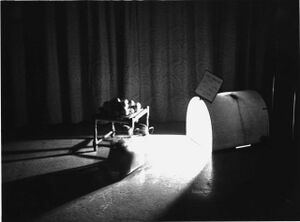
At the 1951 Paris congress on cybernetics Grey Walter demonstrated a variant of the tortoise alongside Norbert Wiener’s “moth-bedbug”, which was similar in many respects. Wiener and Grey Walter had corresponded about their respective machines and Wiener commented on their similarities and differences in the 1950 and 1952 editions of Cybernetics. The key difference was that the two photo-cells on Wiener’s machine did not scan (rotate). Instead the photo-cells were fixed on the left and right-hand side of the moth-bedbug, which moved purposefully toward or away from light in the manner of a moth or bedbug (pro- or anti-phototropic). The rotating photocell on the tortoise allowed the creature to better orientate because the stimulus (light) it first encounters as it scans space is re-enforced with each subsequent scan. The scanning action accounted for the meandering gait of the machine and for its tendency to explore and investigate the stimulus presented to it. In contrast, Wiener’s more excitable moth-bedbug would seek its target and move toward it. If confronted with two stimuli the moth-bedbug would “oscillate”– displaying tremors associated with disorders of the nervous system (it was the machine’s purpose to demonstrate neurological disorder). The tortoise on the other hand would manoeuvre around both sources of stimulus – two equidistant light sources would not present a dilemma for the tortoise because the action of scanning produced a hierarchy of order – which was contingent on the function of the photocell. In an hypothetical instance, Elsie whose photocell rotated anti-clockwise would take one route (left) and Elmer, whose photocell rotated clockwise, would take another route (right). Both actions would be contingent on their experience and would establish the conditions for subsequent actions, which would in turn be a response to contingencies presented to the creature.
The quality of positive tropism affords the following: “the photo-cell amplifier and motors are connected in such a way that, when an adequate light signal is received, the exploratory behaviour is checked and the organism orientates itself toward the light and approaches it. Until it ‘sees’ the light, the photo-receptor is in continuous rotation, scanning the horizon for light signals. This scanning process is linked with the steering mechanism in such a way that the ‘eye’ is always looking in the direction of movement; thus, when a signal is received, from any direction, the machine is in a position to respond without too much manoeuvring.”[6]
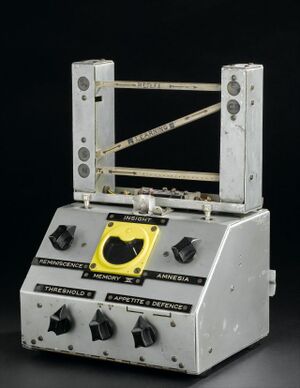
The function of the photo-cell supports the theory of “internal scanning as a function of electrical brain rhythms in the final stages of sensory perception [...] What the nervous system receives from the sense organs is information about difference – about ratios between stimuli.”[7] In The Living Brain, Grey Walter describes the cybernetic machines he built as “mirrors of the brain” and, in common with Bateson, Craik, and McCulloch advocated the methods of Claude Bernard which involved a “methodical feedback system of ‘experimental theory and experimental practice’, the one always leading back to another.”[8] The way in which the tortoise orientates its environment is recursive, an action is dependent on cycling information which influences subsequent action. The machine does this by scanning its photoelectric cell, which orders the organism’s relation to space and time. Scansion, Grey Walter argues, serves to dismantle the paradox of Buridan's Ass whereby the creature, when exposed to equidistant stimuli (two equally tasty carrots for instance), starves to death in an agony of indecision. Bateson and Wiener had discussed what would happen if a finite state computer was fed a paradox: Wiener suggested it would oscillate between the two equally valid answers before eventually jamming. Early servo mechanical robots and early computers were often associated with neurosis. Both CORA (Grey Walter’s second generation tortoise) and Wiener’s Bed Bug / Moth displayed “neurotic” behaviour when faced with a paradox. However in the first generation of cybernetic tortoises, the rotating scanner allows the servo-creature to resolve spacial paradoxes, as Grey Walter noted: “The creature explores the possibilities; when it gets close to the first light its moderation mode is invoked and it wanders across and does the same thing with the other light; it forms a figure-of-eight diagram”. In this case the paradox of Buridan’s ass becomes academic as the creature “naturally” finds its place within a rich matrix of stimuli.
For Grey Walter the tortoise more successfully dealt with the philosophical issues of “determinism” and “free will” than Wiener’s moth/bedbug.[9] Whilst the moth/bedbug located its target quickly (like a classic goal-directed servo-missile), the seeming indecision of the bedbug demonstrated that on a fundamental level the machine was making choices. For Grey Walter it was the ruminative nature of the tortoise that makes it most like a living organism, in contrast to the moth/bedbug which, in directly following the command to seek its target, was more machine-like. The difference was a machine which was goal-directed, as opposed to a machine which was self-directed.
For Grey Walter the tortoise occupied “Bergsonian time”, the situated, embodied time of the organism.[10] Grey Walter felt that Wiener had not been fully appreciative of the philosophical implications of this difference. “Oddly enough” Grey Walter noted some years later, “the artificial animals that I built at this time incorporated an elementary scanning receptor, while [Wiener’s] model did not. My ‘tortoises’ are not confused by the dilemma of Buridan's donkey, while his ‘moth’ would trundle confidently midway between two targets, missing both. Wiener refers to some of the differences between the two models […] without apparently appreciating the significance of space time transforms as a possible resolution of the ‘determinism free will’ dilemma.”[11]
Norbert Wiener did, however, appreciate the “sociability” of the tortoise – again in contrast to the moth/bedbug which paid singular attention to the light source it was directed to. In the 1952 edition of The Human Use of Human Beings Wiener stated: “For [Grey Walter’s tortoises] each element carries a light so that it can stimulate the others. Thus a number of them put into operation at the same time show certain groupings and mutual reactions which would be interpreted by most animal psychologists as social behaviour if they were found encased in flesh and blood instead of brass and steel. It is the beginning of a new science of mechanical behaviour even though almost all of it lies in the future.”[12]
Both of these factors – the tortoise’s relation to time and space and the tortoise’s seeming ability to recognise its Self in the Other – would be taken up by Lacan in his 1954-55 Seminar II (as I make clear in the following chapter).
CYBERNETIC CREATURES–BRAITENBERG–VEHICLES
At the 1951 Paris congress on cybernetics Grey Walter demonstrated a variant on Elsie and Elma, which went by the less homely name of CORA (COndition Reflex Analogue)[13] This was actually learning circuitry incorporated into the tortoise Elsie –an adaptation of the Machina Speculatrix which now became the Machina Docilis. This augmented machine “is now capable of forming conditional reflexes which follow the classic lines enumerated by Pavlov and elaborated by his pupils”[14] The circuits allowed the machine to make “choices” and “discriminate”. CORA “worked out the contingency of two series of events and permits a “learned response to appear if the contingency turns out to be significant.”[15] In practical terms the machine manoeuvred around a stool when warned by a police whistle, after encountering the stool on numerous occasions and registering contact with its touch sensors when the whistle is blown. The tortoise first responds to light whilst a whistle is blown and “learns” to respond to the whistle alone.[16] When the obstacle that the machine manoeuvres around (a stool) is removed, the machine still takes evasive action when the whistle is blown (it no longer needs the touch stimulus). In The Living Brain Grey Walter describes the seven stage circuitry required for CORA to acquire a conditioned response. This would require the machine to store information about a previous action and to act in response to it. This is a stage of abstraction removed from the first generation of tortoises. These take the form of symbolic units of difference, a cluster of 1/0 (or on/off, light/dark), in which the world encoded as a memory translates into a learned response. This is still some light years from human consciousness but from this point the distance becomes a matter of degree. The next stage, for Grey Walter’s CORA Mrk 1, was to get the machine to further discriminate between two notes played by the whistle, one implying touch and the other food. This resulted in the machine experiencing “experimental neurosis” displaying “agitation and indecision. After a period of rest however it finally found its way into the feeding hutch.”[17]
For Jacques Lacan, as we will see in the next chapter, these moments are significant: the moments when the Cybernetic Tortoise “jams” in apprehension of another creature like itself; the moments when it meanders uncertainly; the moments it seeks shelter in its hut to replenish and restore itself; the moments it shows some quantum of desire in its wavering, curious passage. These moments offer Lacan a way to describe the discourse of the machine which shapes the human subject in the middle of the twentieth century.
- ↑ World Health Organization. Study Group on the Psychobiological Development of the Child, James M. Tanner, and Bärbel Inhelder. Discussions on child development: A consideration of the biological, psychological, and cultural approaches to the understanding of human development and behaviour. Proceedings of the meetings ... Geneva, 1953-1956. [1. one-volume ed.]. 1971. p31 In which Grey Walter gave a detailed account of the workings of the tortoise.
- ↑ Cobb p74 in Svitlana Matviyenko, Lacan's Cybernetics, The University of Western Ontario,2016
- ↑ Lafontaine Céline. The Cybernetic Matrix of ‘French Theory’; Theory, Culture & Society, SAGE, Los Angeles, London, New Delhi, and Singapore, Vol. 24(5):2007; Liu, Lydia H. The Cybernetic Unconscious: Rethinking Lacan, Poe, and French Theory, Critical Inquiry 36 (Winter 2010),The University of Chicago
- ↑ The Living Brain
- ↑ Walter in Discussions on Child Development (In one Volume 1971) Ed. by J. M. Tanner & Barbel Inhelder, p31
- ↑ Grey Walter, W. The Living Brain, Norton, NY, 1953, p.
- ↑ Grey Walter, The living Brain, Norton, NY, 1953
- ↑ Grey Walter, The living Brain, Norton, NY, 1953, p.133
- ↑ Grey Walter in, Survey of Cybernetics ed. J. Rose (1969)
- ↑ Grey Walter in, Discussions on Child Development (In one Volume 1971) Ed. by J. M. Tanner & Barbel Inhelder, p34
- ↑ Grey Walter in, Survey of Cybernetics ed. J. Rose (1969)
- ↑ Norbert Wiener The Human Use of Human Beings, 1952 (2nd) edition
- ↑ Georges Guilbaud and Jacques Riguet, organised the 1950 and 1951 cybernetic congresses in Paris. A 2,000 dollar grant from MIT’s Center for International Study (CENIS), which was covertly funded by the CIA.
- ↑ Grey Walter “The Addition of a Learning Device to M. Specularix Box 2”; Cybernetic Zoo: https://cyberneticzoo.com
- ↑ Cybernetic Zoo: https://cyberneticzoo.com
- ↑ Pincher, Chapman. Cora and the Long Low Whistle, Will The Robot Brain Alter Our Lives?, Sunday Herald (Australia) 28 Jan 1951, p16
- ↑ Grey Walter “slide show lecture on M. Docilis” in Cybernetic Zoo: https://cyberneticzoo.com/category/cyberneticanimals/cora-cyberneticanimals/ CORA Mk 2 was desktop demonstration